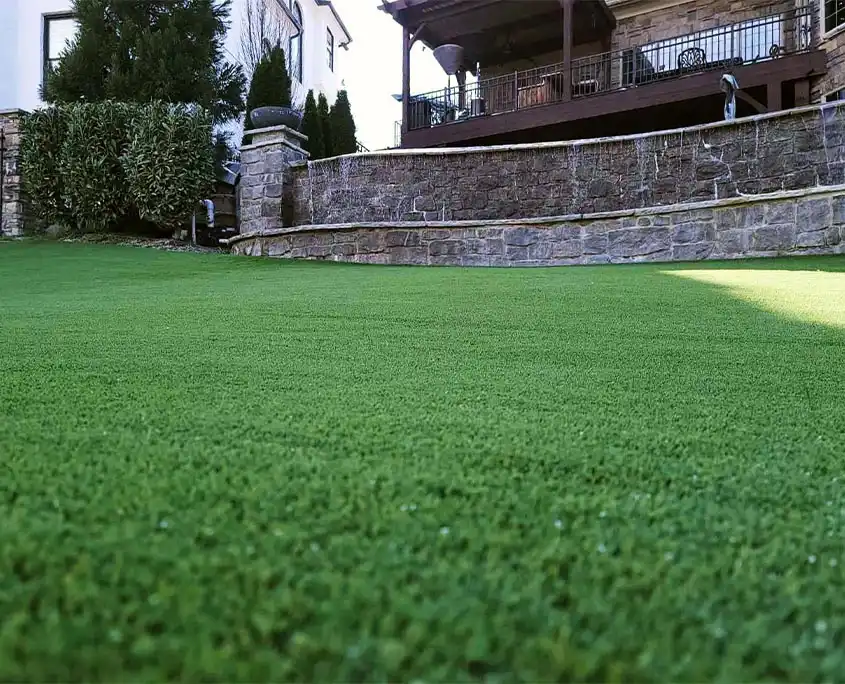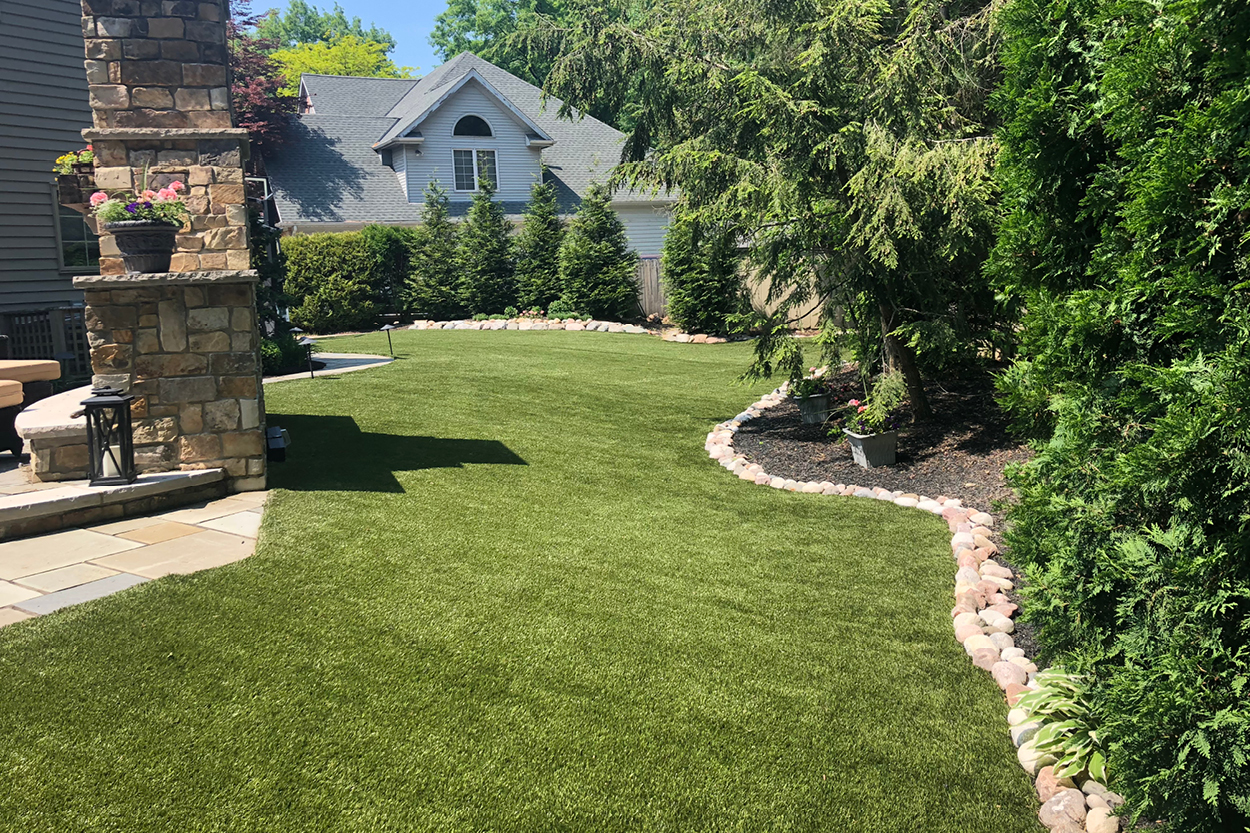Top Arizona Turf Providers Delivering a Realistic Lawn Option
Explore the Environmental Conveniences of Opting for Synthetic Grass Solutions
The fostering of synthetic turf remedies provides a compelling possibility to deal with pushing ecological challenges. By dramatically reducing water use and reducing the application of dangerous chemicals, these alternatives not only promote sustainable landscape design but also protect local ecosystems. The reduced carbon footprint connected with lowered upkeep tasks adds to a much more sustainable method to land management. The effects of these advantages prolong beyond mere conservation efforts, raising questions regarding their long-term influence on habitat preservation and total environmental balance. Checking out these dimensions exposes a complicated interaction worth considering.
Water Preservation Perks
One of the most substantial benefits of synthetic grass is its capability to preserve water. Typical turf lawns need substantial irrigation, particularly in areas prone to drought or water limitations. On the other hand, synthetic grass does not need watering, dramatically reducing the overall demand for water sources. This attribute is specifically valuable in dry areas where water deficiency is a pressing concern.
By eliminating the requirement for normal watering, synthetic grass adds to sustainable landscape practices and helps mitigate the environmental impact of too much water usage. The preservation of water extends to the decrease of drainage, which can lead to dirt erosion and river contamination.
Furthermore, the installment of fabricated grass permits communities and property owners to designate water resources extra successfully, concentrating on crucial uses such as alcohol consumption water and agriculture. The change towards fabricated grass not just advertises accountable water use however additionally lines up with broader ecological objectives aimed at maintaining all-natural resources.
As neighborhoods significantly prioritize sustainability, the water preservation advantages of synthetic grass provide a compelling situation for its fostering in business and household landscaping jobs.
Lowered Chemical Use
The shift to synthetic grass considerably decreases the dependence on chemical therapies frequently used in all-natural grass upkeep. Conventional grass administration commonly includes the application of chemicals, herbicides, and plant foods to promote growth and control bugs. These chemicals can present dangers to human health, regional wildlife, and the environment, adding to dirt and water contamination.
On the other hand, artificial lawn gets rid of the need for these hazardous materials. Once installed, it needs very little upkeep, mainly being composed of normal cleansing and occasional infill replenishment. This reduction in chemical usage not only profits the immediate setting yet likewise adds to wider environmental security. By reducing the launch of synthetic substances right into the ecosystem, synthetic grass advertises much healthier soil and water systems.
Furthermore, the absence of chemical overflow connected with synthetic grass installations assists secure regional rivers from air pollution, sustaining marine life and keeping biodiversity. Artificial turf companies phoenix. As neighborhoods significantly prioritize lasting techniques, going with synthetic grass offers a sensible solution that straightens with environmental conservation goals. With this shift, property owners can enjoy rich eco-friendly areas without endangering eco-friendly wellness, leading the way for useful reference an extra lasting future
Lower Carbon Footprint
Furthermore, the installation of synthetic grass can result in significant water preservation. Natural lawns require considerable amounts of water for irrigation, which not just adds to the carbon impact related to water extraction and therapy however additionally strains neighborhood water sources. In contrast, man-made turf needs very little upkeep, calling for no watering, thereby dramatically decreasing water usage and its connected power costs.
Additionally, the durability of synthetic grass adds to its reduced carbon impact. With a lifespan of up to 15 years or more, the need for regular substitutes is lessened, leading to much less waste and reduced energy intake in production and dealing with traditional yard alternatives. Overall, synthetic grass provides a sustainable option for environmentally conscious landscape design.
Environment Preservation
Habitat conservation is a critical factor to consider in the discussion over landscape design options, particularly when contrasting synthetic grass to natural turf. All-natural lawn lawns usually call for extensive upkeep, consisting of the usage of herbicides, pesticides, and fertilizers, which can detrimentally impact regional ecosystems. These chemicals can leach into the dirt and waterways, damaging native vegetation and fauna and interfering with regional environments.
Artificial turf gets rid of the demand for damaging chemicals, therefore shielding neighboring wild animals and maintaining the integrity of surrounding environments. The installment of artificial turf can lead to the conversion of former turf locations right into more biodiverse landscapes, such as pollinator gardens or indigenous plant locations, which can sustain neighborhood wild animals.
Ultimately, the transition to synthetic turf not only saves water and lowers maintenance efforts yet additionally cultivates an extra harmonious connection in between human activities and the natural setting, advertising habitat preservation while doing so.
Long-Term Sustainability
Long-lasting sustainability is a critical consider examining the advantages of fabricated grass over traditional yard lawns. Among one of the most significant advantages of synthetic turf is its durability; it can last up to 15-20 years with minimal upkeep, whereas natural grass calls for frequent reseeding and substitute. This durability reduces the demand for continuous resources, such as water, plant foods, and pesticides, which are necessary for preserving a healthy grass yard.
In addition, artificial turf adds to a decrease in carbon emissions connected with lawn treatment devices. Traditional yards commonly require gas-powered mowers, leaners, and blowers, every one of which add to air contamination. Arizona artificial turf. On the other hand, synthetic grass gets rid of the demand for such equipment, advertising a cleaner setting
Moreover, the production of synthetic grass increasingly uses recycled products, boosting its sustainability profile. As suppliers adopt green practices, the ecological footprint of synthetic grass remains to decrease.

Verdict
The fostering of synthetic grass options offers substantial ecological benefits, including considerable water conservation, reduced reliance on unsafe chemicals, and a reduced carbon impact. In addition, synthetic grass help in maintaining all-natural environments by lessening land disruption and advertising lasting sustainability through using long lasting materials. Jointly, these aspects emphasize the possibility of synthetic lawn to contribute positively to ecological health and wellness and provide a practical choice to standard landscaping techniques in a significantly resource-conscious world.
In contrast, fabricated grass does not need watering, dramatically minimizing the overall need for water resources. By minimizing the launch of artificial substances into the ecosystem, man-made turf advertises healthier dirt and water systems.
Additionally, the installment of man-made turf can result in significant water conservation. In comparison, artificial grass requires minimal maintenance, calling for no watering, thus substantially reducing water usage and its linked power costs.
